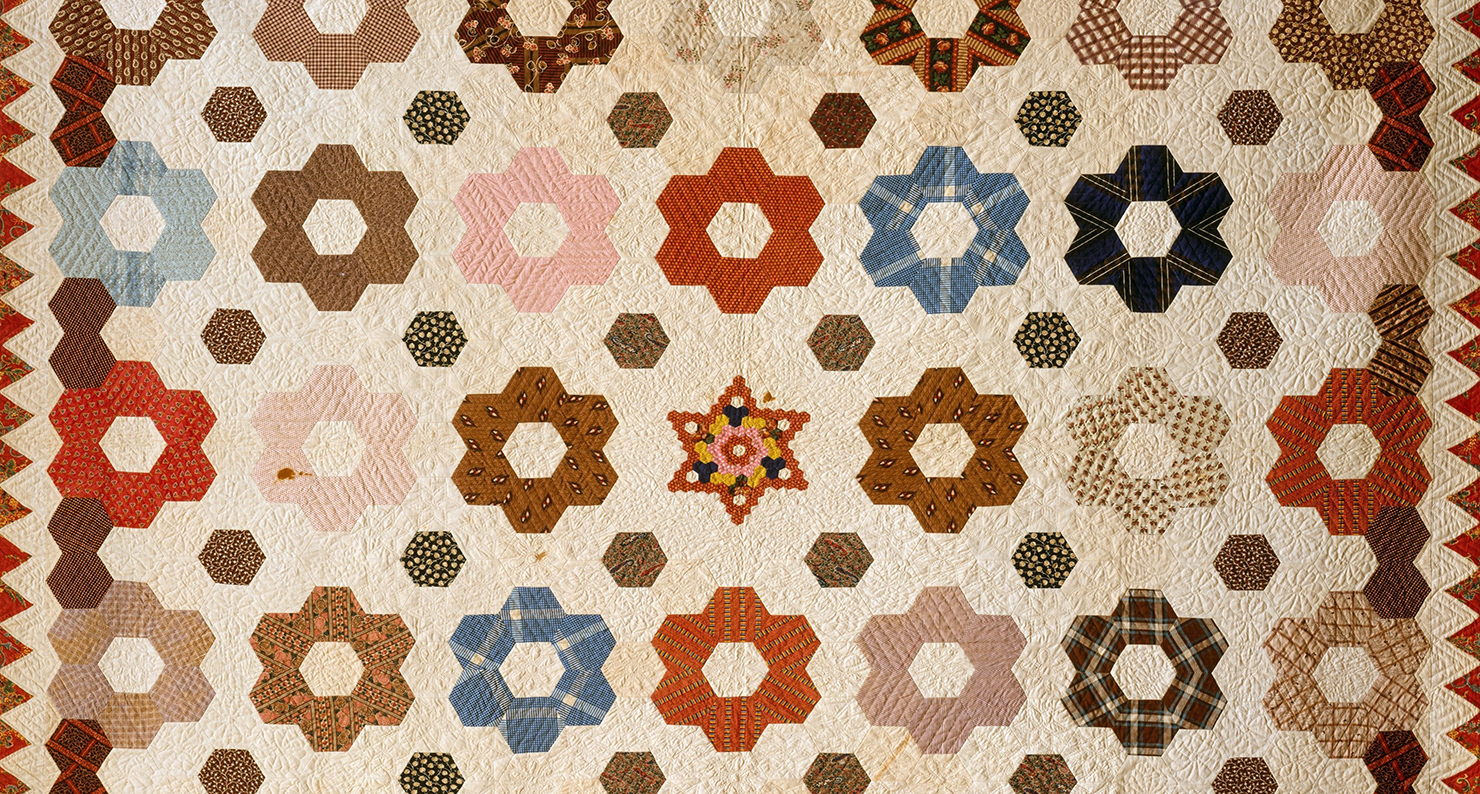
Quilt, Hexagon or Honeycomb pattern, by Rebecca Davis, 1846. The Metropolitan Museum of Art, Gift of Mrs. Andrew Galbraith Carey, 1980.
• Going to a sea shanty convention at a time when dressing up nostalgia feels insidious: “It’s dangerous to treat history like a toy chest filled with plastic broad swords and pirate hats.” (The Awl)
• A history of distraction, or the art of making an effort to pay attention and sometimes failing. (Poetry)
• Ideology acts as a backdrop to the Little House on the Prairie books as much as the big skies of the Great Plains: “If Laura Ingalls Wilder were alive today she would be a member of the Tea Party.” (The New Republic)
• The story of Henrietta Duterte, a Philadelphia undertaker who used coffins as Underground Railroad transportation. (Damn Joan)
• The messy, bloody, and ongoing battle over translating the Bible: “In 1930s Texas, a school board voted to publish the Bible in Spanish for young Latino school children. Governor Ma Ferguson shot them down. Holding up the King James Version, she famously (supposedly) stated, ‘If the King’s English was good enough for Jesus Christ, it’s good enough for the children of Texas!’” (Los Angeles Review of Books)
• Read to the fifth paragraph to find out which history books John Leguizamo used to research his new Broadway show. (NewYorker.com)
• The long tradition of building tunnels, either to escape, explore, or get from here to there. (Atlas Obscura)
• A historical scavenger hunt featuring our first president and an “elaborately restored tent.” (The New York Times)